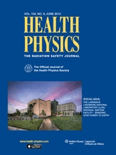
HEALTH PHYSICS
Scope & Guideline
Transforming Research into Public Health Insights
Introduction
Aims and Scopes
- Radiation Protection and Safety Practices:
Focuses on developing guidelines and best practices for radiation protection in various sectors including medical, industrial, and environmental contexts. - Dosimetry and Measurement Techniques:
Emphasizes advancements in dosimetry, including novel methodologies for measuring radiation exposure and the development of new dosimetric devices. - Radiobiology and Health Effects of Radiation:
Investigates the biological effects of radiation on human health, including studies on cancer risks and the impact of low-dose exposures. - Emergency Preparedness and Response:
Examines strategies and protocols for responding to radiological emergencies, including risk assessment and management of radiation incidents. - Regulatory and Policy Aspects of Radiation Protection:
Addresses the regulatory frameworks and policies governing radiation safety, including discussions on international standards and compliance issues. - Educational Initiatives in Health Physics:
Promotes educational programs and training resources aimed at enhancing the knowledge and skills of health physics professionals.
Trending and Emerging
- Low-Dose Radiation Effects:
A significant increase in studies exploring the effects of low-dose radiation exposure on health, reflecting growing concerns and advancements in understanding radiation biology. - Radiation Safety in Medical Applications:
An expanding focus on radiation safety protocols and practices within medical settings, particularly related to diagnostic imaging and therapeutic applications. - Advanced Dosimetry Techniques:
Emerging methodologies in dosimetry, including the use of novel materials and technologies for improved radiation dose measurement and assessment. - Environmental Impact of Radiation:
A trend towards understanding the environmental consequences of radioactive materials and the ecological implications of radiation exposure. - Behavioral and Psychological Aspects of Radiation Exposure:
Increasing interest in the psychological impacts of radiation exposure and the social dimensions of radiation safety, including public perception and anxiety. - Crisis Management and Emergency Preparedness:
Growing emphasis on preparedness and response strategies for radiological emergencies, highlighting the need for robust emergency management frameworks.
Declining or Waning
- Historical Analysis of Radiation Incidents:
While historical case studies were previously a popular theme, recent publications indicate a waning interest in examining past radiological incidents, possibly due to a focus on contemporary issues. - General Public Awareness Campaigns:
Past emphasis on public outreach regarding radiation safety appears to be decreasing, with less frequency in studies aimed at improving public understanding of radiation risks. - Basic Research on Radon Exposure:
Research specifically focused on radon exposure and its health implications seems to be less prevalent, suggesting a potential shift toward other areas of radiation research. - Veterinary Radiation Safety:
Topics related to radiation safety in veterinary practices have diminished, indicating a shift in focus towards human health and safety. - Non-ionizing Radiation Studies:
Interest in non-ionizing radiation research, including electromagnetic fields, has declined, as the journal increasingly concentrates on ionizing radiation issues.
Similar Journals

Nuclear Physics and Atomic Energy
Unveiling the potential of high-energy physics.Nuclear Physics and Atomic Energy is a reputable open-access journal that focuses on the fields of nuclear physics and high-energy physics, providing a forum for researchers, professionals, and students to share their findings and advancements. Published by the Institute of Nuclear Research, National Academy of Sciences of Ukraine, this journal has been committed to disseminating knowledge since its inception in 2006, ensuring that scientific advancements remain accessible to a global audience. With an ISSN of 1818-331X and an E-ISSN of 2074-0565, the journal features a diverse array of articles that span the continued exploration and application of nuclear phenomena. Although currently categorized in the Q4 quartile for Nuclear and High Energy Physics in 2023, the journal is steadily working towards increasing its impact and engagement within the academic community. With a Scopus rank of #74 out of 87 in its category, it serves as a valuable resource for advancing crucial research in a vital scientific area. Researchers are encouraged to contribute their innovative studies to foster collaboration and knowledge sharing in this dynamic field.
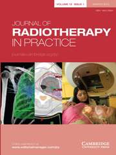
Journal of Radiotherapy in Practice
Exploring New Frontiers in Radiotherapy PracticeJournal of Radiotherapy in Practice is a peer-reviewed journal published by Cambridge University Press, focusing on the evolving field of radiotherapy and its application in clinical practice. With ISSN 1460-3969 and E-ISSN 1467-1131, this journal serves as a critical platform for researchers, clinicians, and students in oncology and radiology, providing vital insights into treatment methodologies, patient care, and innovative practices. Although indexed in Q4 quartiles for both Oncology and Radiology, Nuclear Medicine and Imaging, the journal plays an essential role in disseminating clinical findings and advancing the science of radiotherapy since its inception in 1999. Authors are encouraged to contribute their research, case studies, and reviews that align with the journal's objectives, fostering a collaborative environment for sharing knowledge. Despite its current rankings, the journal aims to enhance its impact and visibility in the scientific community, thereby enriching professional practice and patient outcomes in the realm of radiotherapy.

Radiation Oncology
Connecting global experts to enhance radiotherapy practices.Radiation Oncology is a premier scholarly journal published by BMC, dedicated to advancing the field of oncology through innovative research and comprehensive reviews since its inception in 2005. With its Open Access model, the journal ensures that the latest findings in radiotherapy and cancer treatment are accessible to a global audience, fostering collaboration and knowledge sharing among researchers, clinicians, and healthcare professionals. The journal has garnered an impressive reputation with prestigious rankings, achieving Q1 status in Radiology, Nuclear Medicine and Imaging and Q2 in Oncology as of 2023, reflecting its significant impact on the scientific community. In the Scopus rankings, it stands proud at Rank #61 in Radiology, Nuclear Medicine and Imaging, placing it in the top 81st percentile, and Rank #112 in Oncology at the 72nd percentile. With a converged publication plan extending through 2024, Radiation Oncology remains a vital resource for those dedicated to enhancing cancer treatment methodologies and outcomes.

International Journal of Radiation Research
Pioneering Insights in Medical Radiation ApplicationsThe International Journal of Radiation Research, published by the IJRR-IRANIAN JOURNAL RADIATION RES, serves as a critical platform for researchers and professionals in the fields of radiology, nuclear medicine, and imaging technology. Since its inception in 2003, this peer-reviewed, open-access journal has focused on disseminating significant findings and advancements, contributing to the global discourse on radiation research. With an ISSN of 2322-3243, the journal offers valuable insights into emerging technologies and methodologies, maintaining a commitment to enhancing the understanding and application of radiation in medical science. Although currently positioned in the Q4 category across its scopes, the journal strives to elevate its impact by promoting high-quality research and innovative practices. The journal is accessible to a wide audience and encourages submissions from scholars worldwide, directly supporting the advancement of knowledge in radiological and ultrasound technology. For those seeking to explore and contribute to this dynamic field, the International Journal of Radiation Research represents an invaluable resource.
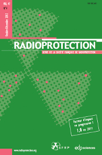
RADIOPROTECTION
Advancing safety in the realm of radiation.RADIOPROTECTION, published by EDP SCIENCES S A, stands as a pivotal journal in the multidisciplinary fields of Nuclear Energy, Public Health, and Environmental Safety. With an ISSN of 0033-8451 and an E-ISSN of 1769-700X, this journal delves into the crucial aspects of radiation protection and its interactions with health and environment, providing a platform for researchers and professionals to disseminate their findings and insights. Despite being classified in the Q4 quartile for Health, Toxicology and Mutagenesis in 2023, its Q3 status in prestigious categories such as Nuclear Energy and Engineering, and Public Health, underscores its relevance in contemporary academic discourse. The journal continues to expand its cachet with converged years of publication from 1977 to 1981 and 1988 to 2024, ensuring a rich history of scholarly contributions. Access options for interested readers include traditional subscriptions, allowing for comprehensive engagement with a broad range of topics surrounding safety, sustainability, and risk management. Whether you are a researcher, professional, or student, RADIOPROTECTION serves as an essential resource for expanding understanding and fostering innovation within its field.
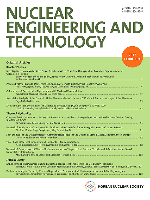
Nuclear Engineering and Technology
Unleashing Potential: Your Gateway to Nuclear ResearchNuclear Engineering and Technology, published by the Korean Nuclear Society, is a premier Open Access journal dedicated to the rapidly evolving fields of nuclear energy and engineering. Established as a significant platform for scholarly communication since 2008, this journal has consistently anchored itself in the academic community, achieving a Q2 ranking in its category as of 2023, reflecting its influence and quality within the domain of Nuclear Energy and Engineering. With an impressive Scopus ranking of #15 out of 77, positioning it in the 81st percentile, the journal publishes cutting-edge research that addresses both fundamental and applied aspects of nuclear technology. Nuclear Engineering and Technology embraces an open access model since 2013, ensuring that valuable research is accessible to a global audience, thereby enhancing collaboration among researchers, professionals, and students passionate about advancing nuclear technology. The journal serves as an essential resource for those aiming to innovate and push the boundaries of knowledge in nuclear sciences.
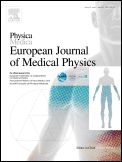
Physica Medica-European Journal of Medical Physics
Exploring the Intersection of Technology and MedicinePhysica Medica - European Journal of Medical Physics is a premier peer-reviewed journal published by ELSEVIER SCI LTD, dedicated to advancing the field of medical physics. Established in 1989 and serving as a critical platform for innovative research, this journal covers a broad spectrum of topics within biophysics, radiology, and imaging sciences, consistently ranked in the Q1 category across these disciplines. With an impressive impact factor that highlights its influence within the scientific community—ranking 52/333 in Radiology, 42/243 in Physics and Astronomy, and 35/152 in Biochemistry—the journal is a valuable resource for professionals, researchers, and students aiming to contribute to the technological and methodological advancements in medical physics. Physica Medica is committed to fostering open dialogue and collaboration within the global medical physics community, although it currently does not offer open access options. The journal's extensive citation history and ongoing relevance underscore its importance in the continuous evolution of medical science.
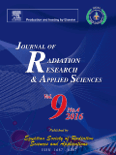
Journal of Radiation Research and Applied Sciences
Empowering global collaboration in radiation research and applications.Journal of Radiation Research and Applied Sciences, published by ELSEVIER, is a premier open-access journal since 2013, dedicated to advancing the understanding and application of radiation research in various fields. With an ISSN of 1687-8507, this journal serves as a vital resource for researchers, professionals, and students engaged in the study of the physical and biological effects of radiation, radiation physics, and its applications in medicine and industry. Its rigorous peer-review process ensures the dissemination of high-quality research that meets the growing demands for innovative solutions in radiation science. By offering comprehensive access options, the journal promotes an inclusive approach to sharing knowledge with the global community. The Journal of Radiation Research and Applied Sciences stands out as a key platform for scholarly communication, fostering advancements that impact both theory and practice in the rapidly evolving landscape of radiation research.

Radiological Physics and Technology
Empowering research in radiological physics.Radiological Physics and Technology, published by SPRINGER JAPAN KK, is a prominent journal that serves as a crucial resource in the multidisciplinary fields of medicine and radiation sciences. With an ISSN of 1865-0333 and an E-ISSN of 1865-0341, the journal has been converging impactful research from 2008 to 2024. It holds a commendable position in academic rankings, currently classified in Q2 in Physical Therapy, Sports Therapy and Rehabilitation and Radiation, along with Q3 for Medicine (miscellaneous) and Radiology, Nuclear Medicine and Imaging. The journal is well-regarded in the academic community, reflected in its Scopus rankings that place it in the upper tiers of its respective categories. Although it currently does not offer Open Access, Radiological Physics and Technology remains a pivotal publication for researchers, academics, and practitioners seeking to advance knowledge and foster innovation in radiological science. Its commitment to disseminating high-quality research ensures its continued relevance and importance within these fields.

RADIATION PHYSICS AND CHEMISTRY
Fostering Interdisciplinary Dialogue in Radiation StudiesRADIATION PHYSICS AND CHEMISTRY, published by Pergamon-Elsevier Science Ltd in the United Kingdom, stands as a leading journal in the field of radiation studies, bridging fundamental research and practical applications. With an impressive 2023 Scopus Rank of 11 out of 58 in the Radiation category, reflecting an 81st percentile ranking, the journal maintains a robust reputation within the scientific community. The journal focuses on the experimental and theoretical aspects of radiation physics, chemistry, and their interdisciplinary applications, providing critical insights that aid the advancement of knowledge in various domains, including nuclear energy, materials science, and healthcare. Although open access options are not available, the journal garners substantial readership and engagement from researchers, professionals, and students alike, as it publishes innovative studies and reviews from 1985 through to its anticipated conclusion in 2025. The ISSN for the journal is 0969-806X, with the E-ISSN being 1879-0895, ensuring global accessibility to cutting-edge research in radiation science.